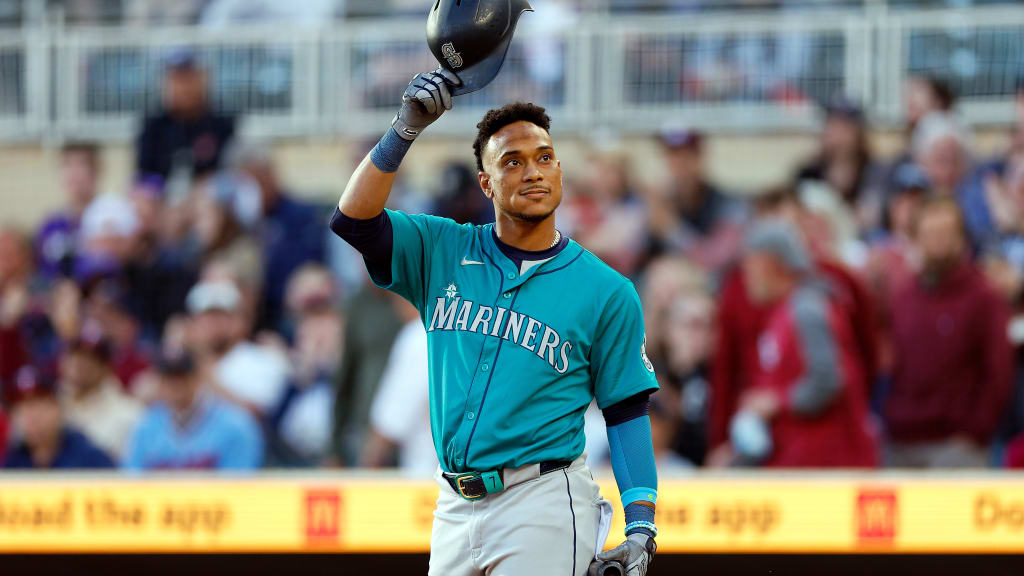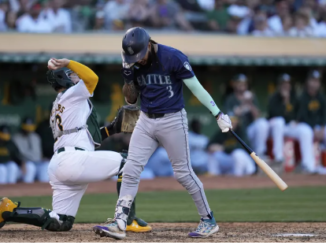
The Seattle Mariners front office almost certainly saw this coming, even if the headline still carried weight when it finally appeared. Veteran infielder has officially declined his option to remain under contract with the team. According to reporting from Jon Heyman of the New York Post, He has chosen to reject his $6 million player option, which would have secured him in Seattle for the 2026 season. By opting out, he immediately enters free agency and becomes available to any team interested in negotiating a new deal.
Although the announcement generated buzz, it didn’t surprise anyone who followed His 2025 campaign. He turned in the kind of performance that typically motivates a player to test the open market, especially when the market is hungry for offense. Throughout the season, Polanco demonstrated that he remains a productive hitter—and in today’s league, a productive hitter with versatility is extremely valuable. While he did spend part of the year managing knee problems, those physical setbacks didn’t prevent him from producing at the plate or from returning to his regular defensive spot late in the season.

Polanco’s ability to hit from both sides of the plate only increased his appeal. As a switch-hitting infielder, he gave Seattle lineup flexibility and matchup advantages, and he continued to deliver impact swings, finishing the season with 26 home runs and a .495 slugging percentage. Those results are more than respectable for a player at his position and age, and they reinforced the impression that he still brings serious offensive value. Even as he navigated knee issues, he was back on the field frequently, showing the coaching staff and front office that he could contribute in meaningful ways when it mattered most.
More: Seattle Mariners official roster addition land Bay Rays’ top Ace to shape their 2026 team identity
However, despite Polanco’s achievements, his situation has received noticeably less attention than other looming decisions facing the Mariners this offseason. Seattle’s conversations have largely centered around their two high-profile trade acquisitions from the deadline: Josh Naylor and Eugenio Suárez. These two players came in with significant expectations and delivered enough impact to become central figures in the team’s future planning.
Among the pair, Naylor—who brought energy, power, and consistency—appears to be the Mariners’ top priority, especially given Seattle’s ongoing need to strengthen its lineup and keep a competitive offensive core intact. The organization reportedly wants to retain him and is expected to pursue him aggressively.
Suárez, too, had an important role, and losing either bat would create an offensive hole the Mariners would need to fill quickly. His performance and experience make him a strong candidate for a new contract if Seattle can find the right terms. Compared to those headline names, Polanco has quietly remained in the background of the speculation, but that doesn’t mean his departure—or the possibility of his return—can be overlooked.

Polanco deserves to be part of the conversation. His production in 2025—particularly the power numbers—proved that he remains a legitimate contributor. A switch-hitter capable of playing second base and providing middle-of-the-order pop is the kind of player who fits on nearly any roster. In a different offseason, his availability might have been viewed as a top storyline for the team, but the Mariners have multiple major decisions happening at once, and Naylor and Suárez have simply dominated the dialogue.
As free agency opens, Seattle must now consider how to prioritize these players. If the front office chooses to put all its early attention into securing Naylor, they risk giving other teams time to convince Polanco to sign elsewhere. In free agency, timing can be just as important as money or years offered. While it’s common for teams to pursue their top target first, they have to manage the situation carefully. If they wait too long to speak with Polanco’s representatives, the door may shut before the Mariners have a chance to make a serious pitch.
More: White Sox officially make $20 million trade decision
That possibility forces Seattle into a challenging strategic position. The team wants to build on the progress it made, and retaining impact hitters is crucial to doing so. Polanco may not be talked about with the same urgency as Naylor, but losing him would still remove an important bat from a lineup that has often been inconsistent in recent years. The Mariners don’t want to be in a situation where they fail to sign Naylor and then also watch Polanco walk away because they didn’t engage fast enough. Navigating that balance requires strong planning—and some degree of risk management.
There’s also the emotional and chemistry aspect. Polanco fit well with the team and delivered during important stretches late in the season. He showed toughness, overcoming physical setbacks and returning to the field when Seattle needed him. That type of reliability carries weight not just statistically, but culturally within a clubhouse. Teams value players who can handle adversity and continue producing.
The argument for bringing Polanco back is straightforward: he hits for power, he’s versatile in the lineup, he’s a proven veteran, and he showed he can still play his position defensively. He also represents an insurance policy—if the Mariners don’t land all of their preferred offseason targets, Polanco offers stability and a known performance level.

But there’s no guarantee Seattle will be the one to bring him back. With free agency now open to him, Polanco can explore other markets, other ballparks, and perhaps opportunities for longer-term contracts. There are always teams searching for power at second base or teams that want more balance in their lineup via a switch hitter. Polanco checks both boxes.
More: ‘Absolutely Sad News’ Phillies trade away $100 million outfielder this offseason
The Mariners have to approach this offseason with precision. If they believe Naylor is the cornerstone they must secure, that decision may shape how they allocate financial resources. But if the process drags on and they neglect Polanco in the meantime, they may find themselves having to replace multiple hitters rather than just one. And replacing offense in today’s market is expensive and often unsuccessful.
Polanco’s choice to decline his option simply elevates the stakes. It doesn’t mean he can’t return to Seattle—it only means that instead of being under contract automatically, the Mariners now have to negotiate like every other team. Whether or not Seattle ultimately brings him back depends on timing, resources, and how the organization prioritizes the many decisions ahead.
In short, Polanco’s departure from the roster isn’t a formality. It has immediate implications for Seattle’s offseason planning. He produced at a level that makes keeping him a strong option, and the Mariners would benefit from treating him as more than a secondary decision. If they want that bat back in the lineup, they’ll need to make him part of the plan sooner rather than later.



Be the first to comment